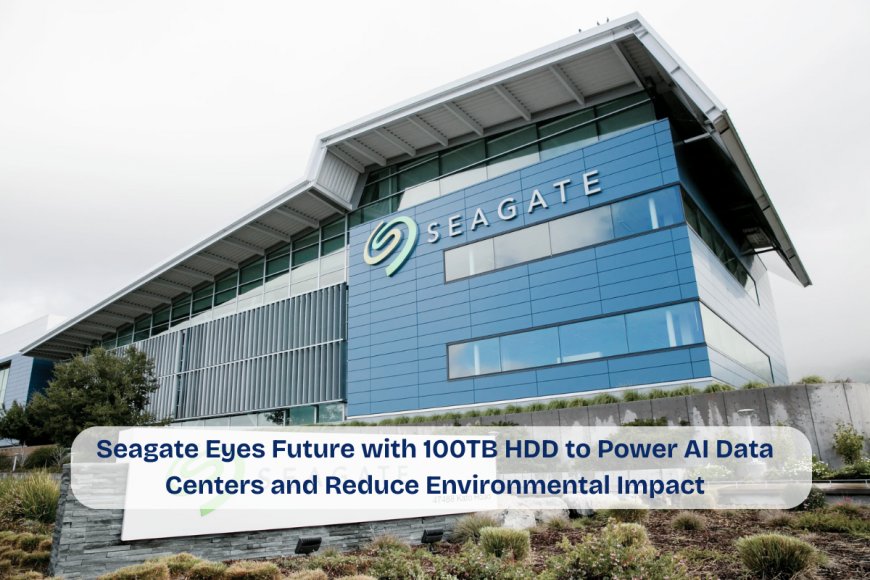AI Drives Demand: Seagate to Launch 100TB Hard Drive by 2030 with Focus on Sustainability
Seagate plans to launch a 100TB hard drive by 2030 to meet AI-driven data demand, focusing on sustainability and energy efficiency.

Seagate, a data storage company, plans to launch a huge 100-terabyte hard drive by 2030, drove by the rising data needs of AI and data centres.This upcoming drive will approximately triple the capacity of Seagate's current top-tier model, the 36TB Exos M, which was announced in January 2025.
Seagate's Chief Commercial Officer BS Teh emphasised that, while a 100TB drive may appear excessive, demand is genuine and expanding quickly. As artificial intelligence models such as OpenAI's ChatGPT, Microsoft's Copilot, and Google's Gemini develop, the requirement for large amounts of data storage becomes crucial. To train these models, tech companies like Microsoft plan to invest $80 billion in data centres by June 2025.
However, the rapid proliferation of AI infrastructure presents environmental challenges. AI models require a lot of electricity; for example, each ChatGPT query uses approximately 2.9 watt-hours, which is nearly 10 times more than a regular Google search. If ChatGPT handled all 9 billion daily internet queries, it would require about 10 terawatt-hours of electricity annually.
To solve this, Seagate focusses on energy-efficient storage solutions. The company is working to increase the storage density of its drives, allowing data centres to employ fewer drives and store more data.This helps to reduce power, space, and temperature requirements. He also stated that Seagate intends for all of its factories to run on renewable energy, hence reducing environmental effect.
Despite competition from solid-state drives (SSDs) that use flash memory, Seagate maintains that traditional hard disc drives (HDDs) are more sustainable in terms of embodied carbon — the total carbon emitted during manufacture.
With these developments, Seagate intends to stay ahead in a rapidly changing technology landscape, balancing performance, cost, and sustainability for the AI-powered future.
This article is based on information from CNBC







